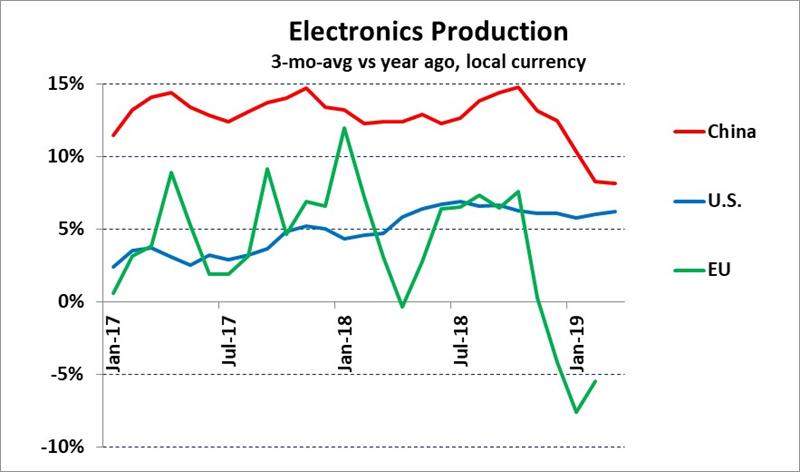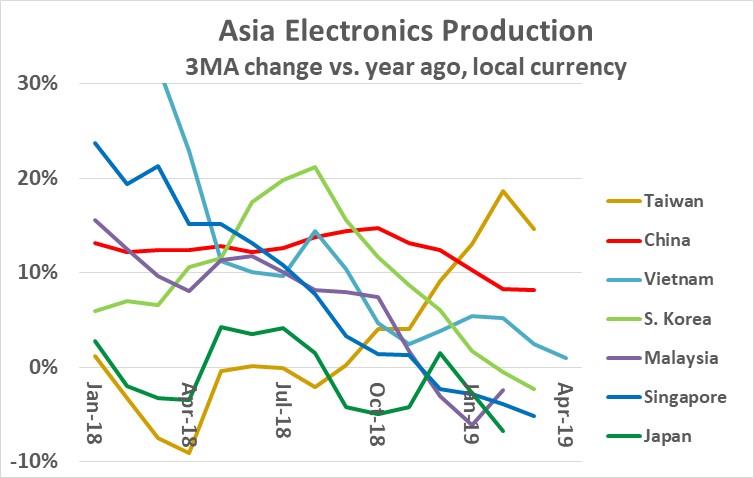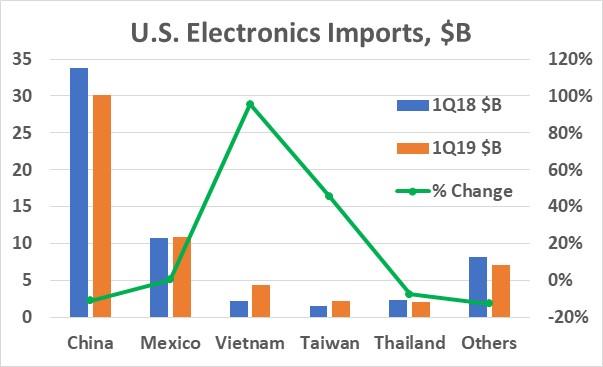This marks the first time China electronics production growth has slowed below 10% since November 2016. Whereas for the US is an experiencing a 12th consecutive month of growth above 5%.
From December to February 2019, the 28 countries of the European Union (EU) displayed a decline in electronic production, when compared to the same months last year. This follows volatile but mostly positive growth the prior two years, explains SI.

Electronics production in key Asian countries is also a mixed picture, reveals SI. Taiwan now has the highest growth in the region and has recovered from production declines in 2015 through 2017.
 What about the impact the ongoing trade dispute between the U.S. and China had on electronics production? Looking at US imports of electronic equipment in the first quarter of 2019 versus a year ago gives an indication of the trends, reports SI. Overall US imports of electronic equipment were $58.8 billion in 1Q 2019, down $2bn from 1Q 2018. Imports from China were down $3.7bn.
What about the impact the ongoing trade dispute between the U.S. and China had on electronics production? Looking at US imports of electronic equipment in the first quarter of 2019 versus a year ago gives an indication of the trends, reports SI. Overall US imports of electronic equipment were $58.8 billion in 1Q 2019, down $2bn from 1Q 2018. Imports from China were down $3.7bn.
Imports from Mexico held steady at $10.9 bn, while Vietnam has emerged as the third largest source of US electronics imports, up from 95% from a mere year ago.
According to SI, the steady growth of US electronics production but decline of imports indicates a possible shift of electronics production back to the US. SI adds that the US/China trade dispute has accelerated the growth of Asian countries, including Vietnam electronics production and Taiwan. For example, in April, LG announced it would cease production of smartphones in South Korea and shift manufacturing to Vietnam.
SI adds that the US/China trade dispute has accelerated the growth of Asian countries, including Vietnam electronics production and Taiwan. For example, in April, LG announced it would cease production of smartphones in South Korea and shift manufacturing to Vietnam.
Although the shift of electronics production from China to other Asia countries has been accelerated by the current trade dispute, the trend has been in place over the last few years. Multinational companies are moving production to Vietnam and other countries due to lower labor costs, favourable trade conditions and openness to foreign investment.







